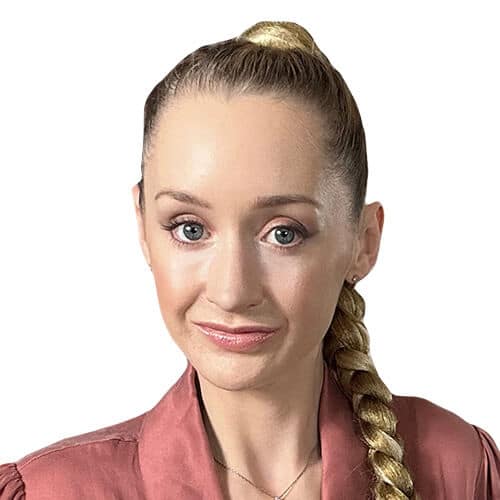-
What is an Eating Disorder?
Disordered eating refers to a wide range of abnormal eating behaviours, such as restricting food intake, dieting or binge eating. These behaviours lie on a continuum and we will all find ourselves somewhere along this spectrum. Eating disorders, however, differ from disordered eating in terms of the frequency and severity of these behaviours. They are complex disorders which have a negative impact on an individual’s physical (e.g., malnutrition and fatigue) and mental health (e.g., self-esteem and mood). Therefore, eating disorders are serious mental illnesses that require specialist support, but they are treatable, and a full recovery is possible.
-
Types of Eating Disorders
As previously mentioned, eating disorders fit along a spectrum of eating behaviours, therefore, there are several different categories of eating disorders.
Anorexia Nervosa
Anorexia nervosa is characterised by constant intake restriction, intense fear of weight gain and a disturbance in perception of weight and shape. An individual with anorexia will keep their weight as low as possible by restricting their intake and/or excessively exercising. Even though someone with anorexia will be considerably underweight, starved and malnourished, they will still fear gaining weight and have a distorted view of their body – they may actually see themselves as overweight.Bulimia Nervosa
Bulimia nervosa is characterised by episodes of binge eating (consuming abnormally large amounts of food in a relatively short period of time), which are associated with a sense of loss of control, guilt and shame. Binging episodes will be followed up compensatory behaviours to prevent weight gain, such as self-induced vomiting, fasting, over exercise and the misuse of laxatives. A person with bulimia usually maintains an average weight for their height, which often makes it less recognisable than anorexia. Similar to anorexia, individuals with bulimia will place a large emphasis on their body shape and weight when evaluating themselves.Binge Eating Disorder
Binge eating disorder characterised by regular patterns of binge eating. Unlike bulimia, an individual with binge eating disorder will not use compensatory behaviours (e.g., self-induced vomiting) after binging. However, similarly, these binges will be associated with a loss of control, guilt and shame.Other Specified Feeding or Eating Disorders (OSFED)
A person with OSFED may present with many symptoms of other eating disorders but their experiences will not fully meet the diagnostic criteria. For example, someone may present with all of the symptoms of Anorexia, including excessive restriction of food intake and intense fear of gaining weight, however they are not significantly underweight (known as atypical anorexia). This does not mean that their difficulties are less serious than other eating disorders but recognises that presentations of difficulties will differ from person to person.Pica
A feeding disorder characterised by the consumption of non-nutritive, non-food substances, such as, chalk or paper.Avoidant/Restrictive Food Intake Disorder
A feeding disturbance characterised by the avoidance of and/or restriction of certain foods. Reasoning behind this avoidance can be lack of interest in food, sensory characteristics (e.g., textures or smells) or a lack of interest in food.Orthorexia
While not officially recognised in diagnostic manuals, orthorexia is characterised by the need to eat healthy (or ‘pure’) foods. How foods are considered pure or impure will differ between each individual.Disordered Eating vs Eating Disorders
Those with eating disorders will display behaviours of disordered eating. However, not all of those who have disordered eating can be diagnosed with am eating disorder. The difference between the two is the frequency and intensity of the behaviours. It can be characterised by the following patterns:
Emotional Eating
This is one of the most common characteristics of disordered eating and of eating disorders themselves, and is done to regulate emotions via external means, which in this case is food. This, unfortunately, results in many people using food to compensate for some lack of emotion, and to numb unwanted emotions, essentially using the food as a coping mechanism.Restrictive Eating
This is a very generalised form of disordered eating which can cover a lot of ground. It can take the form of skipping meals, which can often be justified as fasting, counting calories, eliminating certain foods, and entire macro-nutrient profiles such as carbs and fats. Out of all disorder eating styles, this is likely the one which slips under the radar, as it exists on the borderline of being personal preference and diet.Extreme Dieting
On the other hand, is a little more clear cut, but again is often portrayed as being justified by science, anecdotal evidence and the need to make a change.There are a ton of extreme diets out there which include:
- Tapeworm Diet
- Hollywood Diet
- Baby Food Diet
- K-E Diet, aka the Feeding-Tube Diet
- Werewolf Diet
- The Lemonade Diet
- The Sleeping Beauty Diet
- Cabbage Soup Diet
These extreme diets are marked as being unbalanced and unsustainable in the long term which can lead to physical, mental and emotional health issues. All of these disordered eating styles can fit within the diagnosis of an eating disorder, however, being present by themselves, aren’t enough to warrant treatment. Saying this, these disordered eating styles can lead to full-blown eating disorders.
Myths about Eating Disorders
In today’s society, most people will have some knowledge and understanding of eating disorders, especially the common categories outlined above. However, there are many myths or misconceptions that surround eating disorders, particularly in relation to the causes and who can develop an eating disorder. Below are some of these common myths and an explanation as to why these are not a true reflection of eating disorders.
Eating Disorders Are a Choice
- Often, people may think that eating disorders are just a ‘diet gone too far’ and that it is up to the individual to ‘get over it’. In fact, eating disorders are complex mental illnesses and there is no single cause. Research suggests that eating difficulties are caused by a combination of biological, psychological and social influences (such as the emphasis of thin body ideals portrayed in the media). Therefore, it is important to remember that eating disorders are not a choice, rather a complex mixture of internal and external factors, resulting in significant impairment and distress.
Eating Disorders Only Affect Young Women
- A very common misconception of eating disorders is that they only affect women, in particular teenagers. While it is more likely that eating disorder develop in women between the ages of 12 and 20, anyone can develop an eating disorder at any time regardless of sex. Research has shown that there is an increase in the number of males that are seeking treatment for their eating difficulties. While it is unclear whether eating disorders are increasing in males or that more males are now seeking support, it highlights that the traditional stereotype of eating disorders being constrained to women is in fact a misconception.
‘I’m Not Ill Enough for Treatment’
- One of the key barriers preventing people from seeking support for their eating difficulties is usually because they may feel that they are not ‘ill enough’ to get treatment. This is often because when people think of eating disorders, they usually think of someone drastically underweight. However, this is only typical for Anorexia and not the other eating disorder categories. It is important to remember that eating disorders are mental health illnesses and that physical symptoms (such as weight) are not more important than the mental health symptoms.
Eating Disorders are For Life
- Eating disorders can cause serious harm to an individual, both physically and emotionally. The nature of eating disorders can also lead to feelings of hopelessness or that recovery will never come about. However, eating disorders are treatable and a full recovery is very possible. Getting support as early as possible has proven particularly helpful for recovery.
Over-Eating is the Same as Binge Eating
- While overeating and binge eating are conceptually similar, they are not the same. The key difference between these two behaviours surrounds the amount of food consumed and the control that someone has over this. Binge eating is eating until physically full and is objectively a large amount of food to eat in a short period of time. Individuals who experience binging episodes will feel that they have no control over this behaviour.
Media Influences on Eating Disorders
The fashion industry doesn’t just sell us clothes to wear, to keep us warm and suitably dressed according to the modesty norms of the society we live in. It tells us that if we can look a certain way, people will find us attractive, and we will be more successful in our personal and professional lives. To this end, the fashion industry hires models who are very attractive. However, over the years, models have been getting thinner and thinner. Looking back to the supermodels of the 1980s, where women like Cindy Crawford and Naomi Campbell were at the peak of their careers. Certainly, they were outliers in terms of their good looks, tall stature, and perfectly proportioned bodies, but they were also a lot bigger compared to the top models of today.
While some women are naturally extremely thin, it is very difficult for most women to aspire to be as thin as the fashion models dominating the industry today, and even those who manage to become and stay that thin often do so at the expense of their health. Not just fashion models but growing numbers of young women (and much smaller, but also growing, numbers of young men), are suffering a range of diseases, including early onset osteoporosis, because of their unhealthy weight. At the other end of the scale, levels of obesity are also soaring among young people, and part of this may be because they do not have role models of a healthy weight to look up to. When you don’t even have a chance of having a body shape slightly like the ideals held up, you might as well give up—that’s the sort of thinking that can contribute to becoming dangerously overweight, with all the health risks associated with the condition.
The answer doesn’t lie in hiring “plus size” models to give overweight people role models to identify with, but in normalising beauty at a healthy weight, and accepting healthy, normal levels of variation. Young people need role models who present them with the achievable goal of looking good at a weight that is appropriate for their height and build.
Common Co-Morbidities with Eating Disorders
Eating disorders often occur inthe presence of other disorders. These can include:
- Bipolar Disorder
- Obsessive-Compulsive Disorder
- Panic Disorder
- Post-Traumatic Stress Disorder
Particularly, Dr Becky Spelman has noticed a co-occurence of borderline personality disorder (BPD and eating disorders. This may be the case due to the difficulties individuals with BPD have in managing their emotions, and consequentially utilising food as a means to temporarily suppress any negative emotions. This can be a very effective way for someone to manage their pain in the short term, helping them feel they have some control over the discomfort they are experiencing.
Dr Becky Spelman has found that eating disorders are typically seen in people who come from families where there is emotional neglect, meaning their emotions were not responded to well by their parents. Emotional neglect occurs because the parent (or usually both parents in the household) are delayed in their own emotional development that they can’t manage their own emotions, let alone the emotions of their child. This type of neglect leads to borderline personality disorder, and an eating disorder is one of many behaviours that people with borderline traits use to try and help them get by.
Treatment
Recovery from eating disorders is very possible! According to the National Institute for Health and Care Excellence (NICE), the leading treatment for eating disorders is Enhance Cognitive Behavioural Therapy (CBT-E). Cognitive behavioural therapy (CBT) is used in the treatment of several mental health difficulties, focussing on the here and now to break cycles of unhelpful thinking using a range of coping strategies.
CBT-E is based on a model of eating disorders that is used to treat all eating disorders, focussing on the cognitive processes and beliefs that are involved in maintaining eating difficulties. CBT-E aims to change an individual’s core beliefs about themselves and food, as well as identifying potential triggers. This treatment is completely tailored to each individual’s unique experiences.
There are several stages to this treatment:
- Understanding the client’s experiences and difficulties, providing insight and education into these concerns.
- A detailed review of progress and identify any barriers to change.
- Addressing and modifying processes that are maintaining eating difficulties.
- Focus on maintaining the positive changes made and how to keep these going after therapy.
Booking in Treatment for an Eating Disorder
You will usually commit to a year of treatment and see various members of our team throughout this year who will offer you different times of interventions for different stages of your treatment however shorter term treatment is also available. Staff include specialist psychiatrists, Counselling Psychologist, CBT Psychotherapists, Nutritionists and other appropriate clinicians.
We accept self-referrals and all major health insurance companies. Ask us for more details about referring you to one of our partner inpatient treatment centres if required.
To find out more contact and to book a free initial chat with us about eating disorder or body image related treatment, please get in touch with the Private Therapy Clinic on Whatsapp message at: +447511116565 email, chat bot or book online to arrange an appointment.
References
Fairburn, C. G., Cooper, Z., & Shafran, R. (2003). Cognitive behaviour therapy for eating disorders: A “transdiagnostic” theory and treatment. Behaviour research and therapy, 41(5), 509-528.
Fairburn, C. G., Cooper D Phil, Dip Psych, Z., Doll D Phil, H. A., O’Connor, M. E., Bohn D Phil, Dip Psych, K., Hawker, D. M., … & Palmer, R. L. (2009). Transdiagnostic cognitive-behavioral therapy for patients with eating disorders: a two-site trial with 60-week follow-up. American Journal of Psychiatry, 166(3), 311-319.
National Institute for Health and Care Excellence (2017). Eating Disorders: recognition and treatment. Retrieved from: Link
National Eating Disorders Association (2018). Busting the myths about eating disorders. Retrieved from: Link
Strother, E., Lemberg, R., Stanford, S. C., & Turberville, D. (2012). Eating disorders in men: underdiagnosed, undertreated, and misunderstood. Eating disorders, 20(5), 346-355.
Very Well Mind (26 May 2021) Difference Between Disordered Eating and Eating Disorders. Retrieved on 25th July 2021 from, Link
Eating Disorder Hope (17th Feb 2016) Disordered Eating vs. Eating Disorders: What is the difference? Retrieved on 25th July 2021 from, Link
Psychology Today (23rd Feb 2014) Disordered Eating or Eating Disorder: What’s the Difference? Retrieved on 25th July 2021 from, Link
Related Services
- Child Psychiatry
- Child Psychologists and Psychotherapists
- Clinical Supervision
- Cognitive Analytic Therapy (CAT)
- Compassion Focused Therapy (CFT)
- Corporate Wellbeing
- Counselling London, UK and Online
- Couples Therapy
- Dialectical Behaviour Therapy (DBT)
- Family Therapy
- Free Psychological Tests
- Gestalt Therapy
- Hypnotherapy
- Integrative Therapy
- Mentalisation Based Therapy
- Motivational Interviewing
- Online Therapy
- Person-Centred Therapy
- Psychiatry Services
- Psychoanalytic Therapy
- Psychodynamic Psychotherapy
- Psychological Testing and Evaluation
- Psychological Tests & Assessments for Expert Witness & medico legal (and other purposes).
- Psychologist
- Psychotherapy
- Short-term Dynamic Psychotherapy (ISTDP)
- Systemic Therapy
















